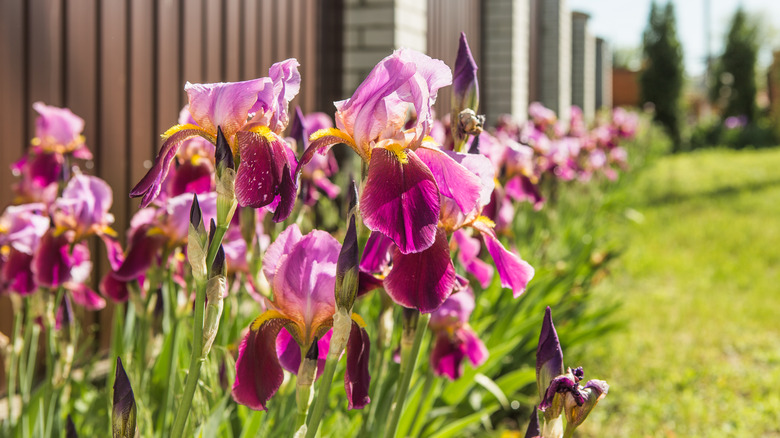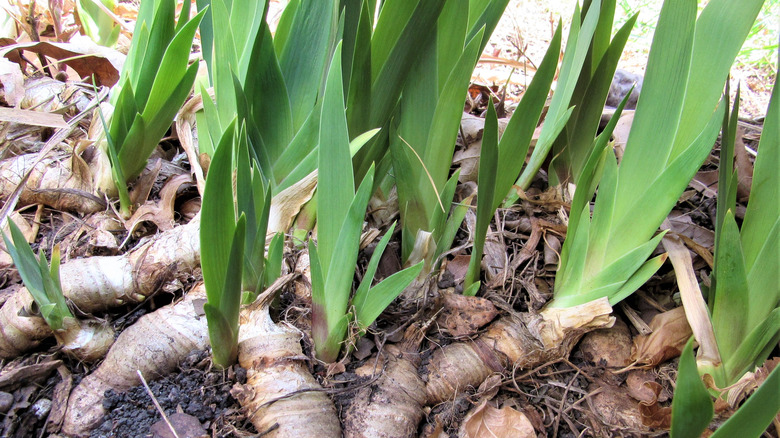German irises – also known as bearded irises – offer beautiful blooms from early to late spring. Their spiky green foliage also adds interesting textures and shapes to the garden. But how should you care for your irises in the fall to get them ready for winter and to ensure they’ll return in spring? There are a few things you should do to keep your irises healthy and happy, including trimming them, making sure they’re clean of debris, and moving or replanting them if their location is no longer ideal. Most gardeners deadhead the spent blooms on their irises in late spring, after the flowers have faded. This is important to do, especially if you have irises that rebloom in late summer, to make room for new growth.
In the fall, the first thing to do to clean up your irises is to deadhead the flower stems. Then you may want to trim the leaves back, especially if they have already started to turn brown or yellow. You can cut them to about two or three inches above the rhizome, using bypass pruning shears. Even if you are planning to divide or replant your irises in a new place, trimming the leaves before digging them makes them easier to handle.
Should you divide or move your irises?

If your irises are looking bedraggled or overcrowded, or not blooming as well as they used to, consider dividing them. German irises increase rapidly and need dividing every 2-3 years. This is an easy task and will provide many benefits. Simply dig them up, trim off any soft or rotted part of the rhizome (the fleshy potato-like tuber at the base), and clean off any weeds or other debris clinging to them. Many weeds like to grow among irises, including grasses. If there are any wet mushy or rotten spots, cut them off entirely, and let the iris dry out before replanting.
When replanting, determine if your irises are happy in their original place. They need plenty of sun to bloom, and room to spread. They may also have been planted too deep or had too much mulch on them. If you had to dig them from a too-tight spot next to a sidewalk or other border to divide them, consider moving them to where they won’t become easily overcrowded. Irises aren’t too fussy about soil, but if they were in clay soil, consider adding a bit of compost or other amendments to improve the drainage in their new spot. Planting them in well-drained soil decreases the chances of the rhizomes developing any damp rot problems.
Planting your irises correctly

The easiest way to plant your irises after dividing is to dig a hole about four inches deep. While holding the rhizome with the roots dangling down into the hole, fill in the soil and pat it down around the iris so that a bit of the rhizome is left exposed. Having the rhizome exposed to the sun helps flower buds form and provides necessary nutrients. If you have irises that have not bloomed in a while, they may be buried too deep, so divide and replant them.
Irises do best without mulch directly on top of them, but a natural mulch (such as pine bark) near and around them helps deter weeds. They don’t really need winter protection, but a light layer of pine straw laid over them can help protect them from cold winds if temperatures plummet. Be sure to divide and replant irises between late summer and early autumn, to give them plenty of time to settle into their new space before winter.
In addition to dividing and replanting your German irises in the fall, this is also the time to divide and replant Siberian irises. Unlike German irises, which dislike soil that is too wet, Siberian irises love soggy soil. Your replanted irises should bloom the following spring, but if they don’t, be patient and give them another year to get used to their new location. Resist the urge to fertilize them, as irises do not need any fertilizer.



